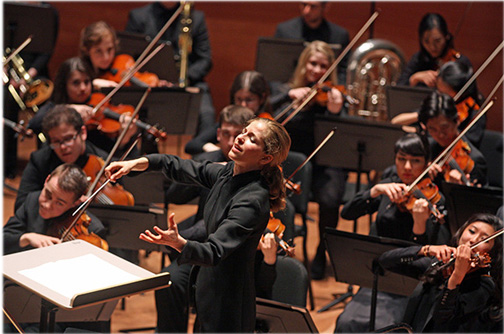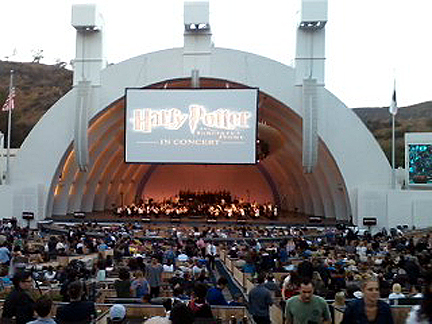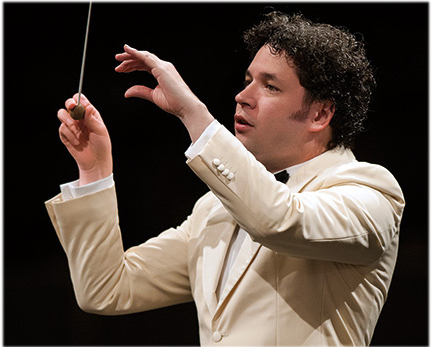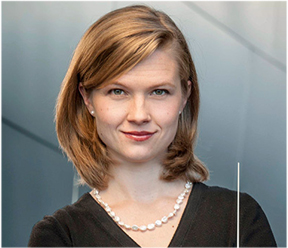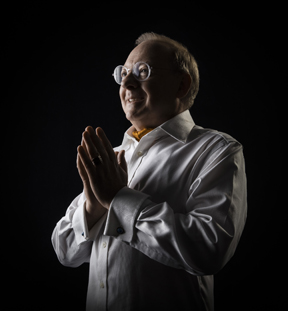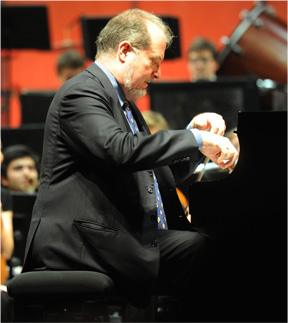By Robert D. Thomas
Music Critic
Southern California News Group
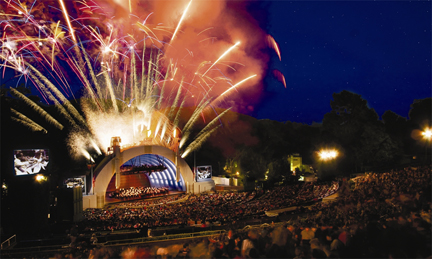 Fireworks are just part of the magic of summertime concerts at Hollywood Bowl.
Fireworks are just part of the magic of summertime concerts at Hollywood Bowl.
Los Angeles Philharmonic: Gustavo Dudamel, conductor
Tonight and Tuesday night at 8 p.m. in Hollywood Bowl
Beethoven: Symphony No. 9. Copland: Fanfare for the Common Man and Lincoln Portrait
Information: www.laphil.com
__________________
Most of the classical music world has a great appreciation for the Los Angeles Philharmonic and with good reason. Its instrumentalists play in top form virtually every night of their yearlong concert season. The Phil’s music and artistic director, Gustavo Dudamel, is one of the most charismatic conductors working today and he has matured significantly in his nine years with the orchestra. Moreover, he is signed through the 2021-22 season.
The orchestra’s management has been exemplary and visionary during the past three decades and even though its longtime President and CEO Deborah Borda left this summer to try and work her magic with the New York Phil, the orchestra’s board has two excellent in-house candidates — Gail Samuel and Chad Smith — to replace her, should it so choose.
However, one aspect of the Phil’s life remains unique among the nation’s orchestras: Hollywood Bowl, which this season celebrates its 96th year. Tuesday night Dudamel and the Phil opened their 10-week classical season, which contains concerts nearly every Tuesday and Thursday plus a couple of other days as well.
Many people, including me, got our first significant exposure to classical music from the Bowl’s “cheap seats.” As usual, the $1 seats are sold out but there are plenty of $8 seats available for some of the classical concerts this season, so that “first exposure” rule still holds true in many respects.
However, what makes the Bowl valuable for the Phil is the growing number of pops and movie nights that it hosts each season, numbers that dwarf most of the classical concerts in terms of crowd counts. This weekend Dudamel and the Phil will appear with Tony Bennett and many other pops-style programs will take place this summer. Most, if not all, will draw near the capacity of about 18,000 people. All of these provide a tremendous cash influx for the orchestra and help it to maintain a positive cash flow in its annual budgets while paying its musicians top dollar.
The Bowl’s central location is another bonus for the L.A. Phil. The Boston Symphony’s Tanglewood Music Festival takes place each summer, but it 2-3 hours driving west of Boston (into one of the prettiest areas of the country, I’ll grant you). Moreover, its listed seating capacity in its main “shed” is just 5,700, less than a third of the Bowl.
If you haven’t visited the Bowl in a season or two, you’ll be surprised at the changes. Each year something is improved — this year it’s a new Main Plaza and enhanced picnicking areas, along with metal detectors to get into the main gate entrance (there’s also a new “mid-gate” entrance that let’s you avoid the crowd at the main gate). If you don’t enjoy the stacked parking on site, there are several alternative forms of transportation, including Park and Ride buses and a shuttle from the Red Line’s Hollywood/Highland station.
Particularly this summer when the nights have been unusually warm, it all makes for a quintessential summertime magical experience.
________________________
(c) Copyright 2017, Robert D. Thomas. All rights reserved. Portions may be quoted with attribution.

